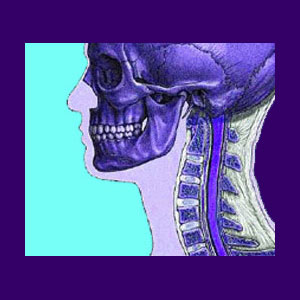
Osteoarthritis therapy can consist of any of the commonly accepted symptomatic treatments for arthritis pain in the spinal joints. Rarely, curative methods of care are also applied. Arthritis is one of the most common of all musculoskeletal disorders and the treatment of this condition is a multi-billion dollar industry worldwide. There are many choices when it comes to finding arthritis pain relief using prescribed therapy modalities, including traditional medical and complementary treatment options. Unfortunately, there is no true cure for arthritis. Furthermore, many cases of OA are misdiagnosed as the actual source of pain.
This discussion focuses on the osteoarthritis therapy sector, including the positive contributions it has made, as well as the negative points of treatment.
Symptomatic Osteoarthritis Therapy
No treatment option will reverse or undo arthritic changes, but many treatments can make the condition much more livable for patients with severe symptoms. Remember that many symptomatic treatments must be continued indefinitely to remain effective.
Most manual therapies, such as chiropractic and physical therapy, are designed to improve joint function. This can help to reduce pain when the area is mobilized.
Pharmaceutical therapy is certainly the most common and popular course of treatment. It is simple for doctors to write scripts and charge high fees and it is easy for patients to simply take the pills and (hopefully) feel better. Be especially careful about using prescription drugs to enact arthritis relief for an extended time period. Besides the many possible health risks associated with long-term drug use, there is always the chance of a patient developing a dependency to the controlled substance. As stated earlier, none of these modalities will cure arthritis. Patients must be crystal clear on this basic fact.
Curative Osteoarthritis Treatment
This section must be prefaced by saying that even curative methods of therapy do not actually cure arthritis. They merely have the potential to resolve current problematic locations using drastic treatment options.
Arthritic changes continue throughout life and there is a very good chance that even the most extreme curative modality will leave the patient susceptible to further arthritic attacks in the future. It is simply the nature of the beast.
The only true curative therapies include surgery and possibly spinal decompression. Decompression therapy is not indicated for all spinal arthritic conditions, but for those which can be treated, a lasting cure may be enacted in the treated region. Meanwhile, surgery can resolve many types of arthritic back and neck pain, but once again, it will not halt future growth of the arthritic processes in the vertebral column.
Is Osteoarthritis Therapy Really Necessary?
Most minor to moderate arthritic conditions are either completely asymptomatic or only mildly and occasionally troublesome. Chronic severe pain is not normally part of the osteoarthritic process, but it can occur in some rare circumstances, such as in mechanical pain syndromes, definitive central canal stenosis or true pinched nerves.
Arthritis in the spine is a common scapegoat on which back pain is often blamed, despite not being the actual cause of symptoms. Remember, osteoarthritis is a completely normal part of getting older.
In order to be fully certain that your arthritis pain has not been misdiagnosed, it might be wise to seek more than one diagnostic opinion and to demand that the pain-generating process be fully explained in a logical manner. If the doctor can not do this, then there is a good chance that the diagnosis is nothing more than smoke and mirrors.
Osteoarthritis Therapy Experiences
The bottom line on spinal arthritis is complicated. It will exist in all adults and will escalate as we age. However, only a few types of arthritic conditions should generate regular or severe symptoms.
Even among the true symptomatic varieties of arthritis, many cases do not produce any actual pain. This is so commonly demonstrated in spinal stenosis and foraminal stenosis patients who suffer terrible neurological effects, such as weakness, numbness and disability, yet have no pain to speak of.
In summary, my suggestion is to research arthritis, if given a diagnosis, and learn the facts for yourself. Remember that spinal joint deterioration is expected as we get older and many people suffer no pain from even the most sinister looking degenerative conditions. Meanwhile other people, with intractable chronic pain, have their ordeals blamed on what amounts to insignificant degrees of arthritic change. It makes little sense, if any at all.
I have just recently started to experience some significant arthritic changes in my spine, hands and shoulders, due to years of abuse during martial arts training. While the arts certainly build your body and your mind in some aspects, they also inflict some heavy damage on joints and other anatomical structures. It has been suggested that these degenerative changes might be partially responsible for my own pain, but so far, I see no evidence of such a diabolical process at work in my own spine.
Despite the doctors not being able to produce any logical explanation of how these normal changes might be causing pain, they are still more than happy to offer drugs. No thanks.





